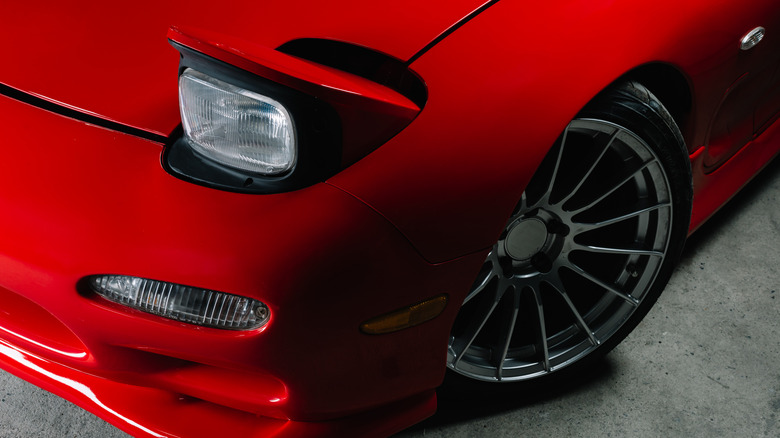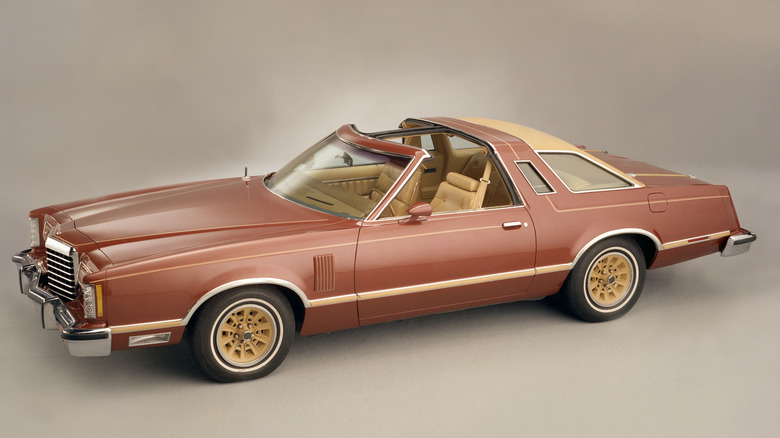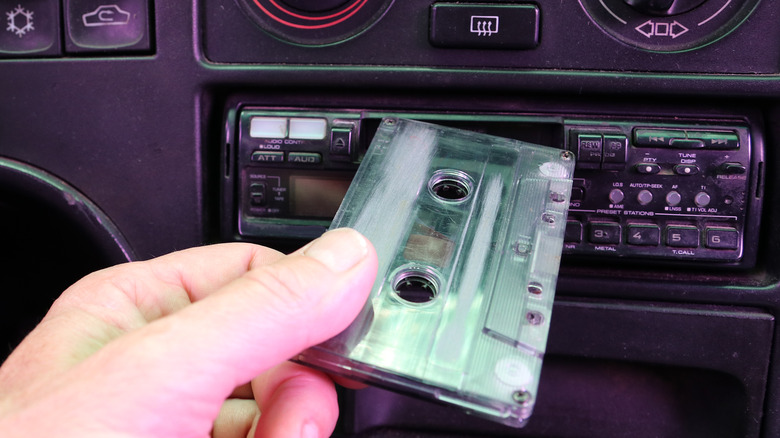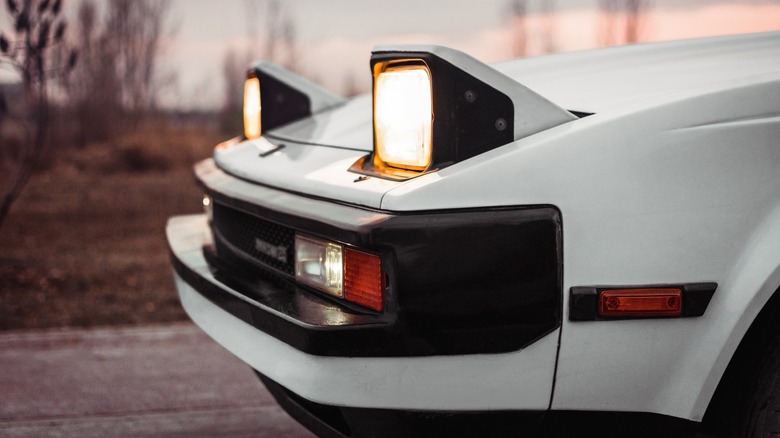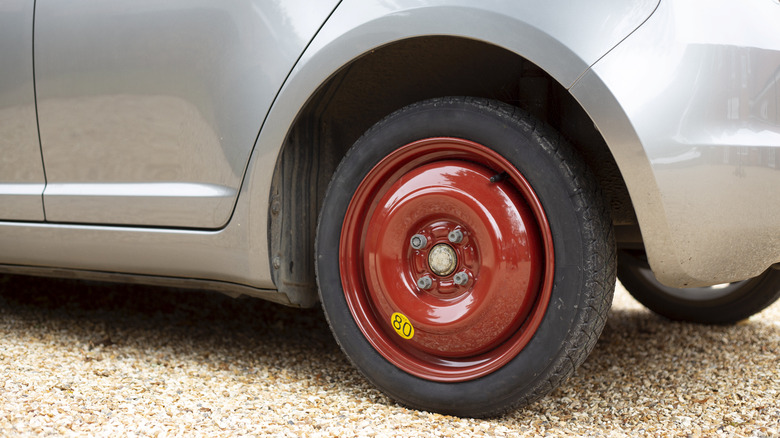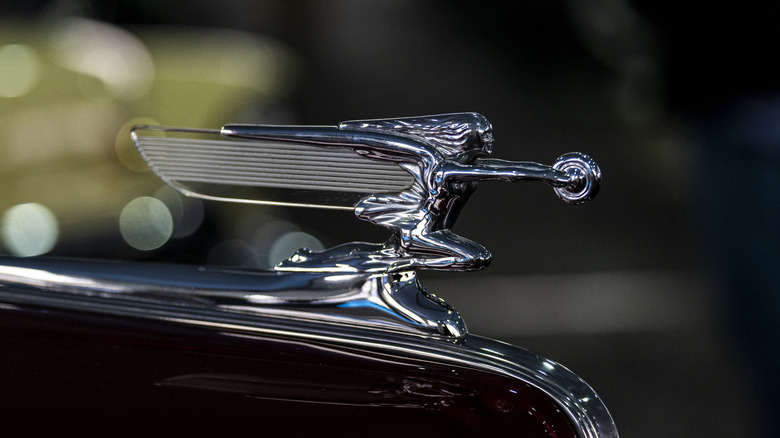5 Great Car Features That Completely Disappeared
Although die-hard gearheads might be loath to admit it, we're living in a golden age of automotive development, with unprecedented rapid advances in horsepower, convenience, safety, and fuel economy. Not to mention the race toward bringing all-electric and autonomous vehicles into the mainstream. Still, in the same way that some audiophiles appreciate listening to old-school vinyl records for the multi-sensory, tactile experience, certain automobile features of yesteryear have an undeniable charm that can't be duplicated by technology, no matter how functionally superior it might be.
It's fun to speculate what the driving-age teens of today will consider nostalgic decades from now. Will it be cars that you actually had to drive yourself? Or cars with wheels that touched the road, for that matter? With the rate that technology is progressing, you never know. With that in mind, there are a handful of auto features that used to be commonplace, yet have virtually disappeared from the modern automotive landscape. Some for the better, while others not so much — you can be the judge of which category they fall in.
T-tops
In the past, if you wanted the fun of open-air motoring, but without a flimsy fabric top or sacrificing the structural rigidity of the car as with a true convertible, you could opt for a set of T-tops. Although General Motors is often credited with inventing the T-top, it was actually seen as early as 1948 on a one-off prototype automobile from The American Sportscar Company (TASCO). Twenty years later, T-tops resurfaced on the new third-generation C3 Corvette, prompting a lawsuit from inventor Gordon Buehrig, who was involved with TASCO. Buehrig won the lawsuit, though the settlement amount was reportedly small.
Fast forward to the late-1970s when T-top popularity really took off, fueled by the black and gold Pontiac Trans-Am in the film "Smokey and the Bandit." Soon, many GM cars offered T-tops, followed by Ford with its Thunderbird (above), Mustang, and others. Japanese manufacturers joined the craze too with the Datsun/Nissan Z cars and the quirky Suzuki X-90 of Red Bull advertising fame, to name a few. Many of the roof panels were glass, so they allowed expansive views of the sky even when fastened in place.
T-tops were gradually phased out over the ensuing decades, finally dying out with the fourth-gen Camaro/Firebird in 2002. Reasons for the demise include safety concerns in a rollover, water leaks, the panels getting damaged during storage and handling, and the prevalence of the newfangled retractable sunroof.
Tape and CD players
Smartphones are remarkable devices, having replaced or are in the process of replacing cameras, credit cards, calculators, keys, alarm clocks, and yes, conventional audio formats like the compact disc. As far as mobile formats, before there was the compact disc, there was the cassette tape and before there was the cassette tape, there was the ill-fated 8-track tape.
High-quality in-dash cassette or CD players, known in car audio circles as head units, would often sell for several hundred dollars — up to $1,000 today when factored for inflation — so theft was a real issue. One solution was the removable "pullout" radio which, just like it sounds, could be slid out of a sleeve in the dashboard and carried with its owner to eliminate theft, assuming that the potential thief would see the empty cavity in the dashboard and move on to another vehicle.
The pullout stereo was highly inconvenient at best, so the next progression was a head unit with a removable faceplate, where only the front control panel was removed and carried with the owner. Still a bit of a complicated process, but the faceplate was much smaller and lighter than the entire stereo. Now, even a modest 128 GB phone can hold approximately 6,000 songs, but it's not the same as getting psyched for your next road trip by making the perfect mix tape. If you were truly on the cutting edge, you'd use a CD burner to create a disc full of your favorite free downloads from Napster.
Pop-up headlights
Years ago, headlights were a bulky affair. Their sealed-beam bulbs were made of actual glass and were typically quite large, as mandated by federal regulations. A popular solution if car manufacturers wanted a low, aerodynamic hood line or wedge-like styling was to make the headlights rise out of the bumper or hood, typically using an electric motor but sometimes driven by engine vacuum, like the C3 Corvette. In their heyday, pop-up lights could be found on everything from econobox Hondas to Lamborghinis.
There's no denying that the hidden headlights had some serious cool factor and watching them raise and retract never grew old — until they stopped raising or retracting, that is. Yes, the mechanics of pop-up headlights eventually failed over time, leading to folks driving around with lights perpetually popped open or worse, winking at other drivers with one light open and the other shut.
U.S. regulations now permit aerodynamic headlights with capsule bulbs that can be seamlessly integrated into a car's fascia, negating the need for complicated and expensive-to-manufacture powered hidden headlamps. The last mass-production vehicles to feature them were the Lotus Esprit and Chevrolet C5 Corvette.
Full-size spare tire
Nothing is worse than getting a flat tire, only to find out that your trunk contains the dreaded "space saver" spare tire, affectionately known as a donut for its diminutive size. Come to think of it, there is something worse: no spare tire at all. Sometime during the 1970s, auto manufacturers realized that they could save money and, well, space, by providing an undersized spare that was only designed to limp the vehicle to the nearest dealership, gas station, or other repair facility at a maximum speed of 50 mph.
Some OEMs like GM, BMW, and Tesla to name a few, don't supply a spare tire at all in select vehicles. Instead, drivers are provided with a canister of sealant that's squirted into the holed tire via the valve stem and a small air compressor to re-inflate the damaged tire.
Though they admittedly eat up a lot of real estate in today's smaller cars, the benefits to the full-size spare tire are that you can continue your trip at normal speeds and without negatively affecting your vehicle's handling the way that a donut does. Subsequently, you can get the punctured tire repaired or replaced at your convenience without a sense of urgency. The full-size spare isn't totally dead, but it's mostly limited to large pickup trucks nowadays, especially those with off-road packages which might rely on a proper spare to return from a rugged trail to civilization.
Hood ornaments
Did you know that once upon a time, hood ornaments were actually integral to a car's radiator cap? Since early radiators were frequently mounted outside of the engine compartment, manufacturers and owners often took the opportunity to personalize their vehicles with an ornamental radiator cap, or mascot as they were sometimes called. Some of the most complex radiator cap ornaments even had a built-in thermometer to measure coolant temperature, which could be viewed from the driver's seat.
In time, styling favored radiators that were fully concealed, but the ornaments remained, now affixed directly to the leading edge of the hood. Some of the more well-known hood ornaments include Jaguar's leaping cat, Mercedes-Benz's three-pointed star, and Rolls-Royce's winged woman, the Spirit of Ecstasy. However, even more reasonably priced brands received a little flair courtesy of their hood ornaments, including Plymouth, Chevrolet, Pontiac, and Buick.
In the late 1980s, wearing hood ornaments as jewelry became a popular fashion statement to the point where some dishonest folks were stealing them from cars, resulting in the development of retractable hood ornaments that disappeared when the vehicle was unattended. A certain few cars still wear hood ornaments today, but they've largely disappeared. Reasons include the trend away from ornate chrome trim, safety concerns in a collision, and even aerodynamic drag and its effect on fuel economy.
